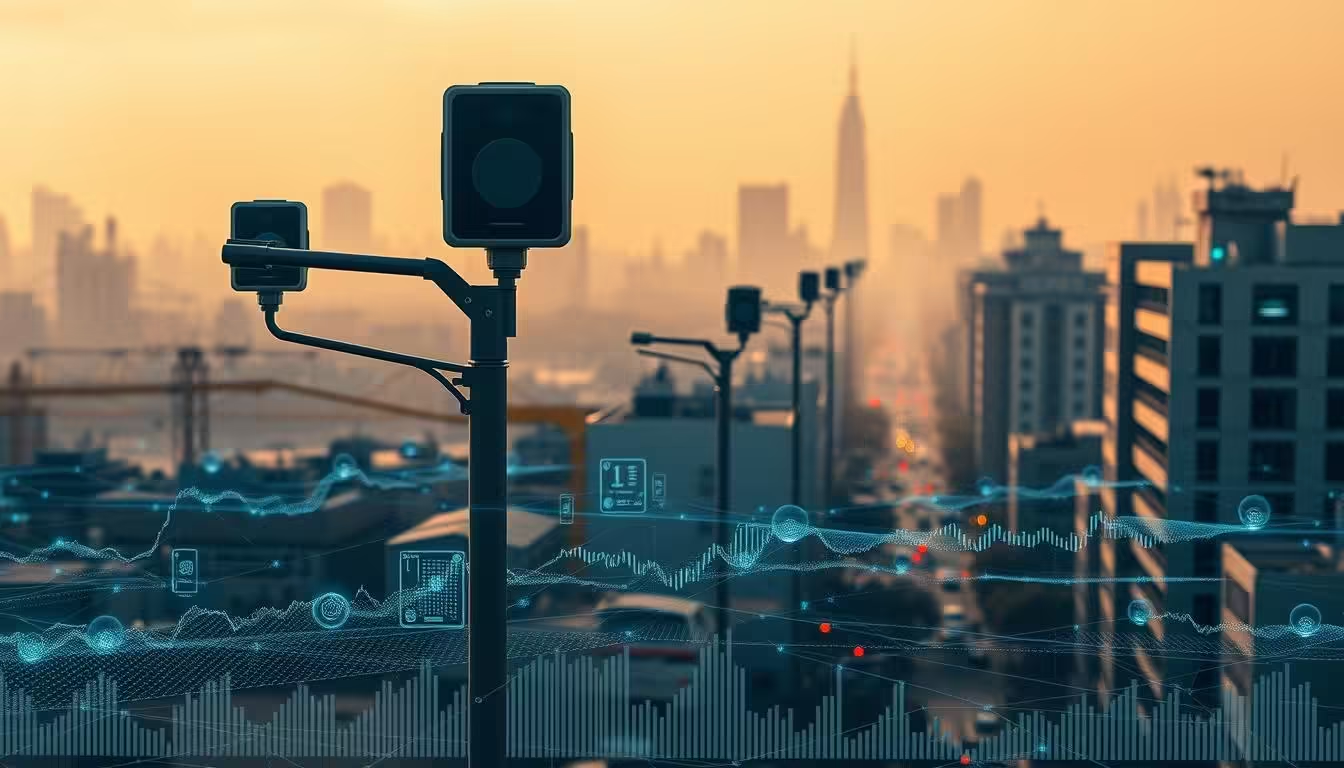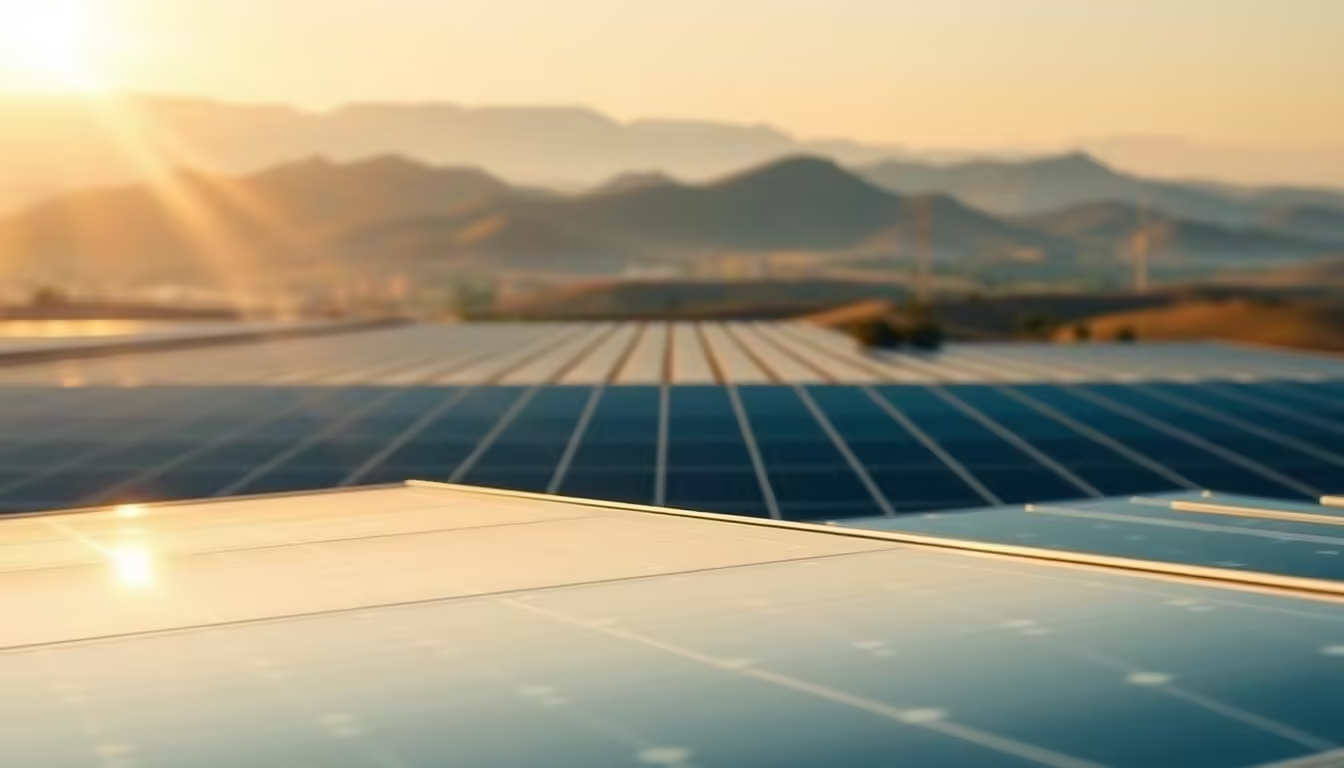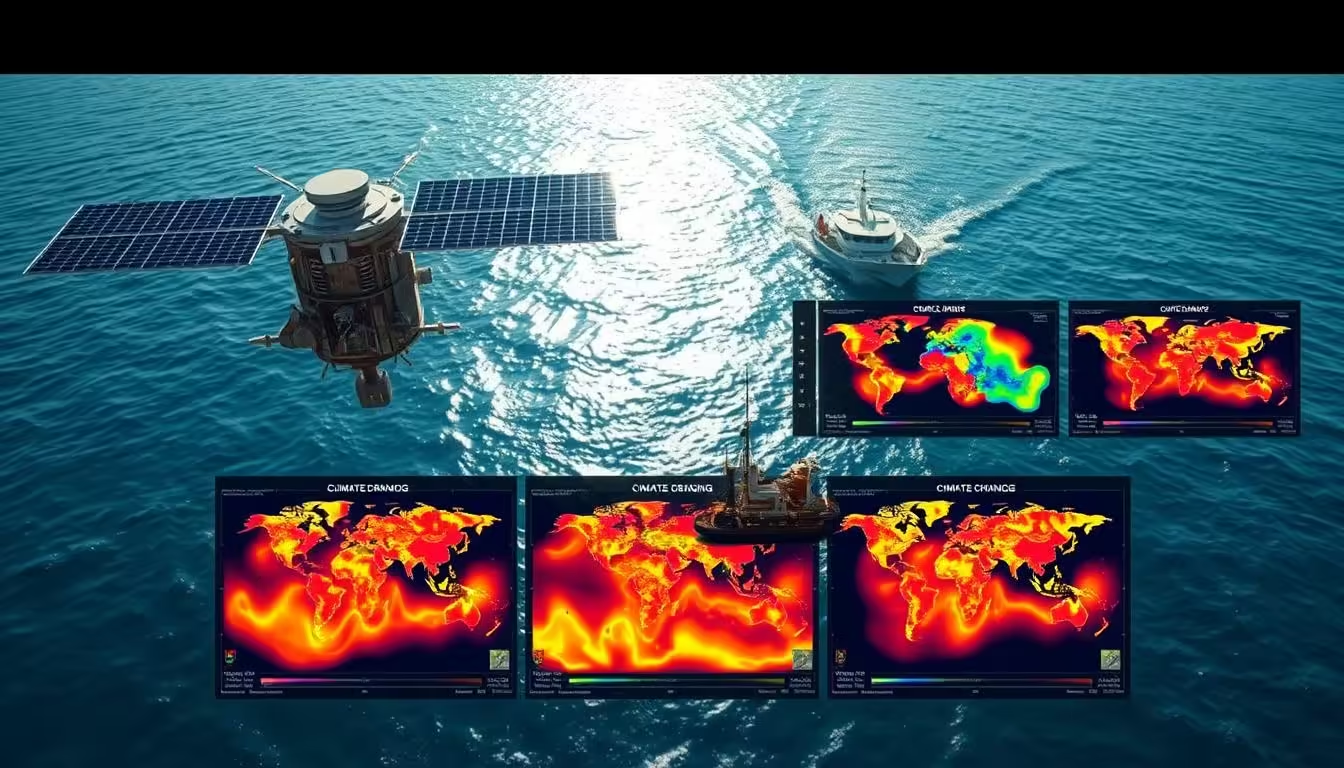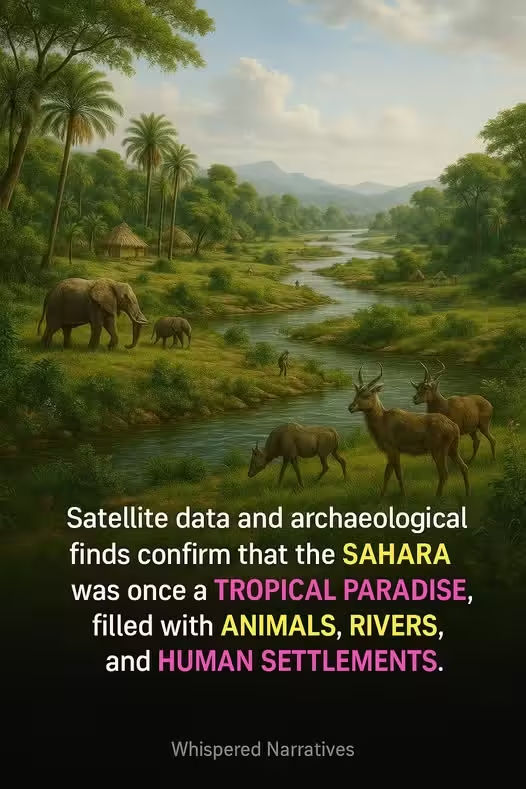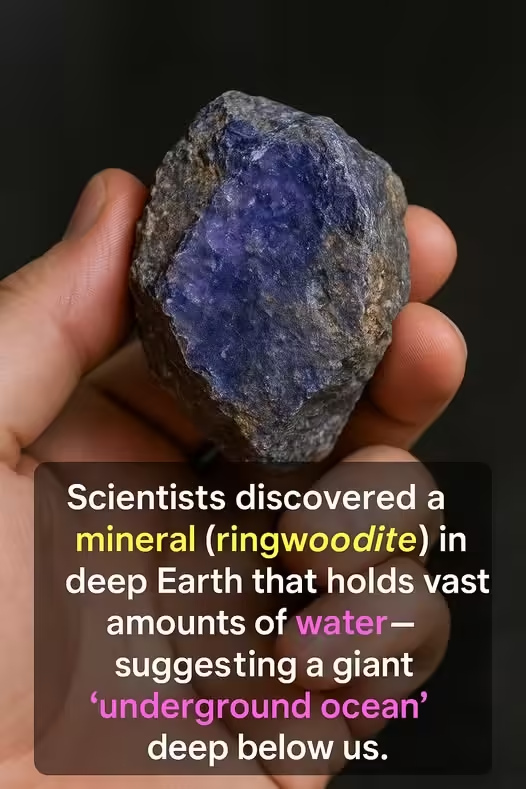Air pollution is a growing concern in urban areas, affecting the health and well-being of millions. Smart air-quality sensors are revolutionizing the way cities monitor and manage pollution levels. By providing real-time data on air quality, these sensors enable urban managers to make informed decisions to reduce pollution.

The use of smart sensors allows for a more granular understanding of air quality, measuring pollution levels block by block. This information is crucial for developing effective strategies to mitigate the impact of air pollution on urban populations.
Key Takeaways
- Smart air-quality sensors provide real-time data on air quality.
- These sensors help cities tackle air pollution more effectively.
- Urban management can make informed decisions using the data from smart sensors.
- Measuring pollution levels block by block allows for targeted interventions.
- Smart sensors are a crucial tool in the fight against air pollution.
The Growing Crisis of Urban Air Pollution
The growing crisis of urban air pollution demands immediate attention and action from city authorities. As urban populations continue to swell, the air quality in cities is deteriorating at an alarming rate, posing significant threats to the health, wellbeing, and quality of life of urban residents.
Health Impacts of Poor Air Quality
Poor air quality is linked to a myriad of health issues, including respiratory diseases, cardiovascular conditions, and even neurological damage. The World Health Organization estimates that nine out of ten people worldwide breathe polluted air, resulting in seven million premature deaths annually.

Economic Costs of Air Pollution
The economic costs of air pollution are substantial, ranging from healthcare expenses to lost productivity. A study by the World Bank highlighted that air pollution costs the global economy significant amounts annually, underscoring the need for effective pollution mitigation strategies.
Traditional Air Monitoring Limitations
Traditional air monitoring methods have several limitations, including sparse monitoring networks and a lack of real-time data. These limitations hinder the ability of cities to effectively manage and mitigate air pollution. Advanced air-quality sensors can measure pollution levels block by block, providing a more granular understanding of urban air quality.
By understanding the health impacts, economic costs, and limitations of traditional monitoring, cities can begin to develop more effective strategies to tackle urban air pollution.
Understanding Smart Air-Quality Sensor Technology
Cities are increasingly turning to smart air-quality sensors to tackle the growing issue of urban air pollution. These sensors represent a significant advancement in environmental monitoring, offering real-time data that can be used to improve public health and urban planning.
Evolution from Traditional to Smart Sensors
Traditional air quality monitoring systems have limitations in terms of cost, size, and functionality. Smart air-quality sensors, on the other hand, are more compact, cost-effective, and capable of providing detailed, real-time data on various pollutants.
Key Components of Modern Air Quality Sensors
Modern air quality sensors are equipped with advanced technologies that enable them to detect a wide range of pollutants accurately. These components include sophisticated detection mechanisms and wireless communication technologies that allow for real-time data transmission.
Types of Pollutants Measured
Smart air-quality sensors are designed to measure various types of pollutants, providing a comprehensive view of air quality.
Particulate Matter (PM2.5 and PM10)
Particulate matter, including PM2.5 and PM10, refers to tiny particles that can be inhaled deep into the lungs, causing health problems. Smart sensors can accurately measure the concentration of these particles.
Gaseous Pollutants (NO2, SO2, O3, CO)
Gaseous pollutants such as nitrogen dioxide (NO2), sulfur dioxide (SO2), ozone (O3), and carbon monoxide (CO) are also monitored by smart air-quality sensors. These gases can have significant adverse effects on health and the environment.
The ability of smart air-quality sensors to measure a wide range of pollutants makes them invaluable tools for cities aiming to improve air quality and protect public health.
How Block-by-Block Monitoring Transforms Urban Management
The implementation of block-by-block monitoring is revolutionizing urban management by providing detailed insights into air quality. This approach enables cities to tackle pollution more effectively by understanding the nuances of air quality across different areas.
Hyperlocal Data Collection Methods
Hyperlocal data collection involves gathering air quality data at a very granular level, often on a block-by-block basis. This is achieved through the deployment of smart air-quality sensors that can measure various pollutants, including particulate matter, nitrogen dioxide, and ozone. By collecting data at this level, cities can identify specific areas of concern and develop targeted interventions.

Spatial Resolution Advantages
The high spatial resolution provided by block-by-block monitoring allows for a more accurate understanding of air quality variations within a city. This is a significant improvement over traditional monitoring methods, which often rely on fewer, more dispersed monitoring stations. With hyperlocal data, urban planners can make more informed decisions about where to implement pollution-reducing measures.
Integration with Urban Infrastructure
Block-by-block monitoring can be integrated with existing urban infrastructure, such as traffic management systems and public transportation networks. This integration enables cities to respond dynamically to changes in air quality, for example, by adjusting traffic flow or implementing temporary emission controls during periods of high pollution.
- Improved air quality management through hyperlocal data
- Enhanced spatial resolution for targeted interventions
- Integration with urban infrastructure for dynamic response
Real-Time Data Processing and Analysis Systems
Real-time data processing is crucial for effective air quality management in urban environments. As the number of air quality sensors increases, so does the complexity of managing the data they produce.
Cloud-Based Analytics Platforms
Cloud-based analytics platforms play a vital role in processing the vast amounts of data generated by air quality sensors. These platforms offer scalable storage solutions and powerful processing capabilities, enabling cities to analyze air quality data in real-time.
Machine Learning Applications in Air Quality Prediction
Machine learning algorithms can be applied to air quality data to predict future pollution levels. By analyzing historical data and identifying patterns, these algorithms can help cities anticipate and prepare for potential air quality issues.
Data Visualization Tools for Public Awareness
Data visualization is key to communicating air quality information to the public. Effective visualization tools can help citizens understand the current air quality and make informed decisions about their daily activities.
Mobile Apps for Citizen Access
Mobile apps provide citizens with easy access to air quality information. By offering real-time data and personalized recommendations, these apps empower individuals to take control of their exposure to air pollution.
Public Information Displays
Public information displays are another effective way to communicate air quality information to a wider audience. Strategically placed in public areas, these displays can raise awareness and promote a healthier environment.

By leveraging real-time data processing and analysis systems, cities can significantly enhance their air quality management capabilities. The integration of cloud-based analytics, machine learning, and data visualization tools represents a significant step forward in the quest for cleaner, healthier urban environments.
Environmental Technology Creating Sustainable Cities
Environmental technology is at the forefront of creating livable, sustainable cities by providing innovative solutions to urban environmental challenges. As urban populations continue to grow, the need for sustainable practices and technologies becomes increasingly critical.

The role of environmental technology in reducing carbon footprints is multifaceted. By implementing smart air-quality sensors and other green technologies, cities can significantly decrease their environmental impact.
Reducing Carbon Footprints Through Targeted Interventions
Targeted interventions enabled by environmental technology allow cities to address specific pollution sources and reduce overall carbon emissions. For instance, smart traffic management systems can decrease congestion, thereby lowering emissions from idling vehicles.
| Technology | Application | Impact |
|---|---|---|
| Smart Air-Quality Sensors | Real-time pollution monitoring | Improved air quality management |
| Green Building Technologies | Energy-efficient buildings | Reduced energy consumption |
| Smart Traffic Management | Optimized traffic flow | Lower emissions from vehicles |
Supporting Climate Change Mitigation Efforts
Environmental technology plays a crucial role in supporting climate change mitigation efforts. By providing accurate data on pollution levels and environmental conditions, cities can develop targeted strategies to reduce their carbon footprint.
For example, data from smart air-quality sensors can inform policies aimed at reducing emissions from industrial sources or promoting the use of cleaner energy.
Measuring Progress Toward Sustainability Goals
To measure progress toward sustainability goals, cities must have robust systems in place to track environmental indicators. Environmental technology facilitates this by providing real-time data on various parameters, including air quality, energy consumption, and waste management.
By leveraging this data, cities can assess the effectiveness of their sustainability initiatives and make informed decisions to improve their environmental performance.
Case Studies: Cities Leading in Smart Environmental Technology Implementation
In an effort to reduce air pollution, numerous cities are adopting smart environmental technologies, with Chicago, London, Beijing, and New York leading the way. These cities have implemented innovative projects that serve as models for other urban areas worldwide.
Chicago’s Array of Things Project
Chicago’s Array of Things Project is a citywide network of sensors that measure various environmental factors, including air quality, temperature, and humidity. This project has provided valuable insights into urban environmental conditions and has helped inform policy decisions.
London’s Breathe London Network
London’s Breathe London Network is a hyperlocal air quality monitoring project that utilizes low-cost sensors to measure pollution levels across the city. This initiative has enabled London to better understand its air quality challenges and develop targeted strategies to address them.
Beijing’s Air Quality Improvement Initiative
Beijing has made significant strides in improving its air quality through a comprehensive initiative that includes the deployment of air quality monitoring stations and the implementation of emission reduction policies. This effort has led to notable improvements in Beijing’s air quality.
New York’s Community Air Survey
New York’s Community Air Survey is a comprehensive air quality monitoring program that provides detailed information on pollution levels across the city. This initiative has helped identify areas with poor air quality and inform community-based initiatives to improve environmental conditions.
The success of these city-led initiatives demonstrates the potential of smart environmental technology to drive meaningful change in urban areas. By leveraging data and technology, cities can develop effective strategies to reduce air pollution and improve the quality of life for their residents.
| City | Project | Key Features |
|---|---|---|
| Chicago | Array of Things Project | Citywide sensor network, environmental monitoring |
| London | Breathe London Network | Hyperlocal air quality monitoring, low-cost sensors |
| Beijing | Air Quality Improvement Initiative | Comprehensive air quality monitoring, emission reduction policies |
| New York | Community Air Survey | Comprehensive air quality monitoring, community-based initiatives |

Practical Applications for Urban Planning and Policy
The use of real-time air quality data is transforming the way cities approach urban planning and policy-making. By leveraging advanced air-quality sensors, urban planners can now make more informed decisions that directly impact the health and well-being of their citizens.
Traffic Management Optimization
One of the key applications of air quality data is in traffic management optimization. By understanding the real-time impact of traffic on air quality, cities can implement strategies to reduce congestion and lower emissions. For instance, cities can adjust traffic light timings or implement congestion pricing to discourage travel during peak hours.
“Cities are now using data analytics to optimize traffic flow and reduce air pollution,” notes an urban planning expert. This approach not only improves air quality but also enhances the overall efficiency of the transportation network.
Green Space Planning Based on Air Quality Data
Air quality data also plays a crucial role in green space planning. By identifying areas with poor air quality, cities can strategically plant trees and create green spaces to help mitigate pollution. This not only improves air quality but also provides additional benefits such as reducing the urban heat island effect.

Emission Regulation Enforcement
Real-time air quality data enables cities to enforce emission regulations more effectively. By monitoring pollution levels in real-time, cities can identify sources of excessive emissions and take targeted actions to reduce them. This could involve stricter regulations on industrial emissions or initiatives to promote cleaner energy sources.
Public Health Response Systems
Finally, air quality data is critical for developing public health response systems. By understanding the real-time air quality situation, public health officials can issue timely alerts and advisories to protect vulnerable populations. This proactive approach can significantly reduce the health impacts of air pollution.
In conclusion, the practical applications of smart air-quality sensors in urban planning and policy are vast and varied. By leveraging real-time data, cities can create more sustainable, healthy, and livable environments for their citizens.
Challenges in Implementing Citywide Sensor Networks
As cities move towards smarter infrastructure, the implementation of citywide sensor networks presents a multitude of challenges. These challenges span various domains, from financial and infrastructural to technical and social.
Cost and Infrastructure Requirements
One of the primary challenges is the significant cost associated with setting up a comprehensive sensor network. This includes not only the cost of the sensors themselves but also the infrastructure required to support them, such as communication networks and data processing facilities.
Data Privacy and Security Concerns
Another critical issue is ensuring the privacy and security of the data collected by these sensors. With the vast amount of data being collected, there’s a heightened risk of data breaches and misuse, necessitating robust security measures.
Calibration and Maintenance Issues
The accuracy and reliability of sensor data depend heavily on proper calibration and maintenance. Ensuring that sensors are regularly calibrated and maintained is crucial but can be resource-intensive.
Equity in Deployment and Access
Finally, there’s the challenge of ensuring equity in the deployment of and access to sensor networks. It’s essential that the benefits of these networks are accessible to all segments of the population, avoiding disparities that could exacerbate existing social inequalities.
| Challenge | Description | Potential Solution |
|---|---|---|
| Cost and Infrastructure | High initial investment for sensors and supporting infrastructure | Phased implementation, public-private partnerships |
| Data Privacy and Security | Risk of data breaches and misuse | Robust encryption, secure data storage practices |
| Calibration and Maintenance | Ensuring accuracy and reliability of sensor data | Regular calibration schedules, remote monitoring |
| Equity in Deployment and Access | Ensuring all communities benefit from sensor networks | Inclusive planning, community engagement |
Conclusion: Breathing Easier with Smart Environmental Monitoring
As cities continue to grapple with the challenges of urban air pollution, smart environmental monitoring emerges as a crucial tool in the quest for cleaner air. By deploying smart air-quality sensors block by block, cities can gather hyperlocal data, enabling targeted interventions to reduce pollution levels.
The integration of smart environmental monitoring with urban infrastructure not only enhances the accuracy of air quality measurements but also supports the development of sustainable cities. Real-time data processing and analysis systems facilitate the prediction of air quality trends, allowing for proactive measures to mitigate the adverse effects of poor air quality.
Cities like Chicago, London, Beijing, and New York are already leveraging smart environmental monitoring to improve air quality and create healthier environments for their citizens. As the technology continues to evolve, it is likely to play an increasingly important role in shaping urban planning and policy decisions, ultimately contributing to a smarter and more sustainable future.
In conclusion, smart environmental monitoring is a vital component in the fight against urban air pollution, and its continued development and implementation will be crucial in creating a healthier and more sustainable environment for generations to come.
FAQ
What is the purpose of smart air-quality sensors in urban areas?
Smart air-quality sensors are designed to measure pollution levels block by block, helping cities tackle air pollution in real time and improve the overall air quality for their citizens.
How do smart air-quality sensors differ from traditional air monitoring methods?
Smart air-quality sensors provide more precise and localized data compared to traditional methods, allowing for a better understanding of air quality variations across different areas of a city.
What types of pollutants can smart air-quality sensors measure?
Smart air-quality sensors can measure a variety of pollutants, including particulate matter (PM2.5 and PM10), gaseous pollutants like NO2, SO2, O3, and CO, providing a comprehensive picture of urban air quality.
How is the data from smart air-quality sensors used in urban management?
The data collected by smart air-quality sensors is used to inform urban management decisions, such as optimizing traffic management, planning green spaces, enforcing emission regulations, and developing public health response systems.
What are some of the challenges associated with implementing citywide sensor networks?
Challenges include cost and infrastructure requirements, data privacy and security concerns, calibration and maintenance issues, and ensuring equity in deployment and access to the benefits of smart air-quality monitoring.
Can you provide examples of cities that have successfully implemented smart environmental technology?
Cities like Chicago, London, Beijing, and New York have implemented innovative projects, such as the Array of Things Project, Breathe London Network, Air Quality Improvement Initiative, and Community Air Survey, respectively, showcasing the potential of smart environmental technology.
How do smart air-quality sensors contribute to creating sustainable cities?
By providing real-time data on air quality, smart air-quality sensors help cities reduce carbon footprints through targeted interventions, support climate change mitigation efforts, and measure progress toward sustainability goals.
What role do data visualization tools play in smart air-quality monitoring?
Data visualization tools, including mobile apps and public information displays, play a crucial role in enhancing public awareness of air quality issues, enabling citizens to make informed decisions about their daily activities.
How can machine learning applications improve air quality prediction?
Machine learning applications can analyze historical and real-time data from smart air-quality sensors to predict future air quality conditions, enabling proactive measures to mitigate potential air quality issues.

